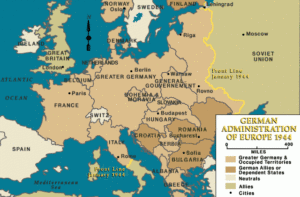The history of the Holocaust, which is a very complex event, is often misunderstood. But misconceptions are dangerous as they can undermine the truth behind the Holocaust and how it happened, and can even lead to Holocaust denial. Misconceptions from a variety of sources may include, but are not limited to, the media, novels and even the education system. Here we address some common misconceptions.

Misconception 1: There were gas chambers to exterminate Jews within every concentration camp.
Although millions of people were killed in gas chambers during the Holocaust, this did not occur at all the concentration camps. There were six extermination camps or ‘death camps’ that operated as killing centres: Bełzec, Sobibor, Treblinka, Majdanek and Auschwitz-Birkenau. The gas chambers at these sites were equipped to kill hundreds of people each day. Chełmno used gas vans instead of gas chambers. Whereas extermination camps were set up for the purpose of killing, concentration camps were designed to exploit people for forced labour under terrible conditions. In some of the concentration camps, such as Mauthausen and Ravensbrück, there were small gas chambers that were used to kill limited numbers of prisoners when they were deemed no longer fit for work. But most concentration camps didn’t have gas chambers, and instead used forced labour and exploitation as a method of killing.

Credit – jewishvirtuallibrary.com
Misconception 2: The Holocaust only happened in Germany and Poland.
A common misconception is that the Holocaust only happened in Germany and Poland because all extermination or ‘death camps’ were located in occupied Poland. However, the Holocaust took place in every country Nazi Germany occupied, which was the majority of Europe at the height of its power. This included British soil, as the Channel Islands were occupied. Within each German-occupied country, the Nazis found willing collaborators to carry out the Holocaust, including bureaucrats, civilians and others who would become victims themselves.

Credit – USHMM
Misconception 3: Nobody knew what was happening to the Jewish people.
Some believe that average citizens didn’t know what was happening to their Jewish neighbours, because if they did then why didn’t they stop the genocide? But people were aware that Jewish people were being rounded up, forced to leave their homes, and pushed into ghettos. Victims’ belongings, homes and businesses were often given to German citizens and auctions of Jewish possessions were held. Before the deportations began, the public were aware of the discriminatory Nuremberg Laws that segregated Jews and restricted their involvement in all aspects of life. Many would have witnessed cattle wagons taking people to the camps, or forced labourers in their towns or villages. Some would have even witnessed massacres. In the town of Mauthausen in Austria, the local population regularly visited the local concentration camp and even participated in some atrocities (for more information read our blog about Mauthausen). British officials were also aware as early as 1941 that Jewish people were being killed in large numbers and in 1942 a speech in the House of Commons condemned what was happening, although the true scale was greatly underestimated.

Credit – USHMM
Misconception 4: Jewish people were the only victims of Nazi persecution.
Although the term the Holocaust refers chiefly to the Jewish victims, they were not the only victims of Nazi persecution and genocide. Other victims included disabled people, Roma and Sinti, homosexuals, Jehovah’s Witnesses, political opponents, Soviet Prisoners of War, those classed as ‘asocial’ and many others. These groups were persecuted and discriminated to varying degrees, and many were also exterminated. Disabled people and the Roma and Sinti people were specifically targeted for extermination, like the Jews.

Credit – USHMM
Misconception 5: All concentration camps tattooed their prisoners.
Although all prisoners were assigned a number that became their identity when they entered a concentration camp, only those taken to Auschwitz and registered as forced labourers were tattooed. Tattooing began in October 1941 and ceased in 1944 due to the influx of Jews from Hungary, although those chosen for labour were still assigned a number.

Misconception 6: Germany had a large Jewish population.
Many believe that Germany had a large Jewish community, which was one of the reasons for the Nazis’ hatred and discrimination. However, the census of 1933 registers around 505,000 Jewish people in a country with a population of nearly 67 million. This accounted for only 0.75% of the population. The Jewish community was in the minority when they were targeted for discrimination, segregation and genocide.

Hannah May Randall – 13/01/21
